The State Theater (1923-1963)
Introduction
Text-to-speech Audio
Images
The State Theater in 1939, showing "The Hunchback of Notre Dame"
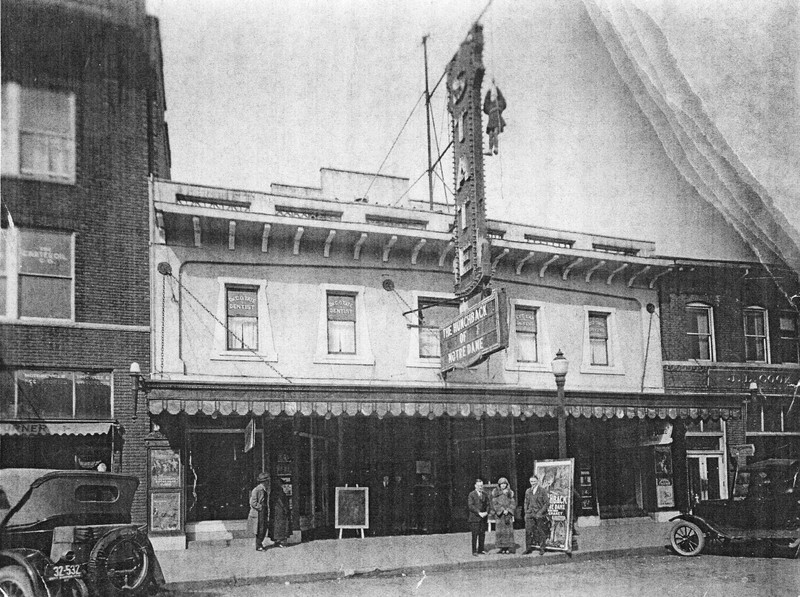
The front of the State Theater, circa 1927
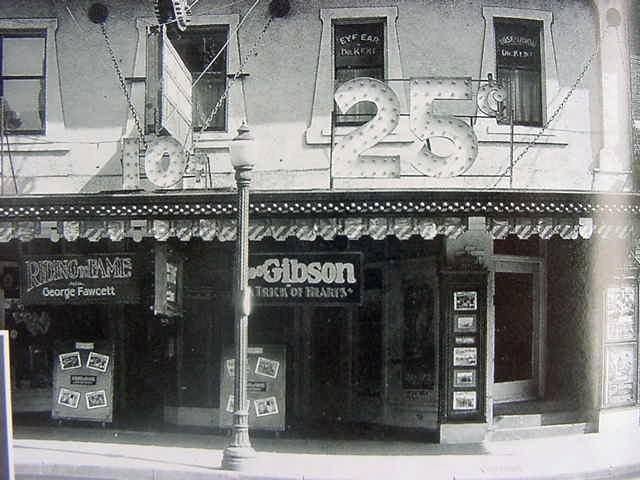
Fourth Avenue theaters circa 1930s
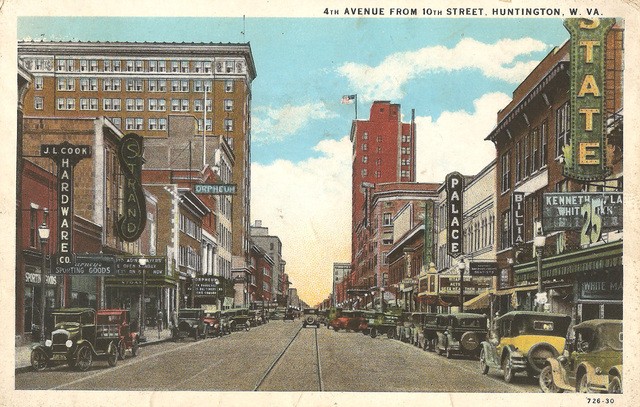
The State, left, during the flood of 1937
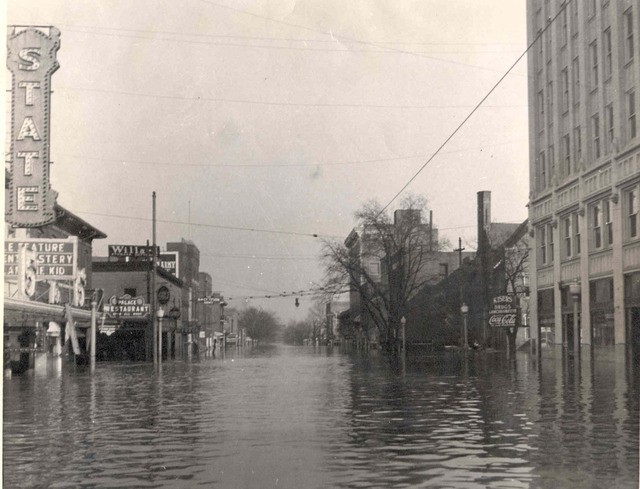
The State Theater is visible in the background of this US Army Corps of Engineers photo of the 1937 flood
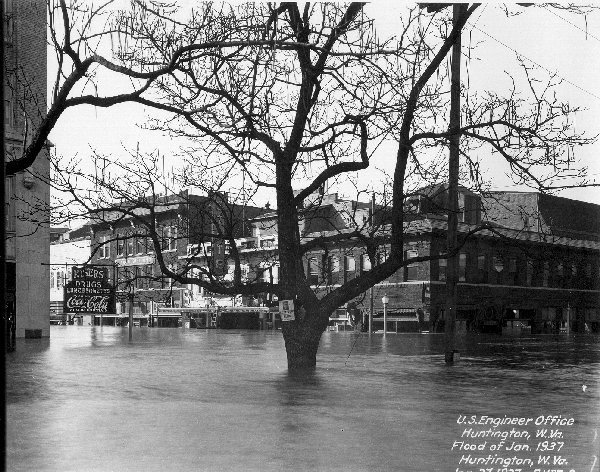
Advertisement for the 1941 WSAZ Jamboree held at the State
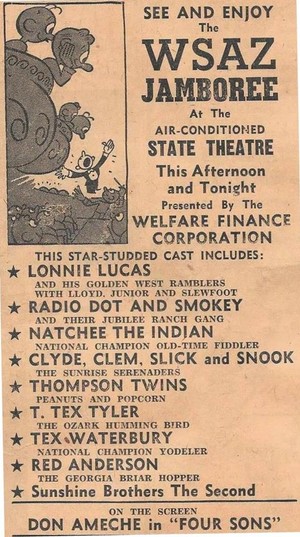
Backstory and Context
Text-to-speech Audio
Throughout most of the twentieth century, downtown Huntington’s Fourth Avenue was home to a concentration of movie theaters. Some, like the Keith Albee, remain open today, while others have been repurposed or stand vacant. Still others have been demolished, with only photographs and residents’ memories left behind. The State Theater was one of these classic theaters along Huntington’s theater row. The State Theater opened around 1923, at a time when the success of the American film industry was skyrocketing and cinemas were steadily replacing vaudeville stages across the country. The State replaced the Hippodrome, a theater that had occupied the location since about 1914. The Hippodrome itself had replaced the Placade Playhouse, which was built in 1912. A few doors down was the Palace Theater, across the street was the Strand (later Roxy) Theater, and just down the road were the Orpheum and the Keith Albee.
The State Theater was owned by the Greater Huntington Theater Corporation, which operated many of the city’s theaters at the time. It had a single screen, and a capacity of 800 people. The State rapidly became a fixture of downtown Huntington’s business scene, its reputation evolving in response to economic and social changes over the years. During Prohibition, for instance, the theater became part of “The Strip,” a district notorious for bootlegging, gambling, and prostitution. According to William Allen Cross, the long-time manager of the State and many other downtown theaters, an apartment above the State was once a popular place where residents could buy illegal liquor. According to Cross, it was also common during the Depression years for farmers to barter their goods for a movie ticket. He even accepted a live chicken for a ticket to the State at one point.
The State showed first-run movies for many years after its opening, but by the 1950s the theater had become known primarily for B-movies and westerns. Indeed, many residents fondly recall going to see cowboy double features at the State every weekend. At the time, admission was 25 cents - 15 cents for children - and a box of popcorn cost only 10 cents. In its final years, the State Theater also hosted live wrestling matches.
In 1963, the Huntington Trust & Savings Bank purchased the former State Theater in order to build a new bank at the corner of 4th Avenue and 11th Street. The building was quickly demolished and the bank was erected in its place. In 1984, however, Huntington Trust & Savings merged with the First Huntington National Bank and the 4th Avenue building was listed for sale. It sat vacant for several years until Marshall University acquired it. Since 1991, the former bank building has housed the Robert C. Byrd Institute, which offers resources and expertise in the manufacturing and technology industries to the local community. Despite having been closed for decades, and the building having been demolished, the State Theater remains an important part of Huntington’s history, and endures in the memories of many residents today.
Cite This Entry
Satterfield, Emma. "The State Theater (1923-1963)." Clio: Your Guide to History. October 31, 2019. Accessed April 29, 2025. https://theclio.com/tour/1596/185
Sources
Casto, James E. "Lost Huntington: The State Theater." Herald-Dispatch (Huntington ) December 31st 2018.
Dirks, Tim. The 1920s: The Pre-Talkies and the Silent Era, Filmsite. Accessed October 31st 2019. https://www.filmsite.org/20sintro.html.
Oral history of Willam Allen Cross, Marshall University Special Collections, OH64-158, Huntington, WV.
Rutherford, Tony. State Theatre, Cinema Treasures. Accessed October 31st 2019. http://cinematreasures.org/theaters/37412.
https://www.herald-dispatch.com/special/lost_huntington/lost-huntington-the-state-theater/article_9b67f233-a1f9-5692-8552-f17a82ee0057.html
https://www.wvencyclopedia.org/media/26368
http://cinematreasures.org/theaters/37412/photos/33705
http://cinematreasures.org/theaters/37412/photos/33700

